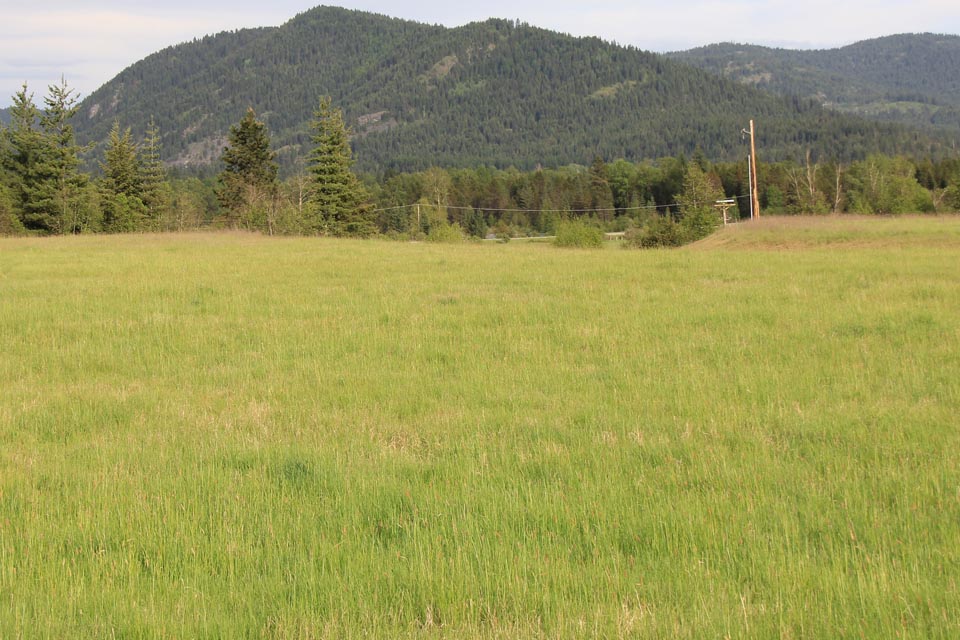View of the lower the Priest River, Idaho area in 1938 (Dorothea Lange, Farm Security Administration, Library of Congress 8b15614u[1]) and in 2014 (CW-2014-05-24-1962). The repeat photograph was taken approximately 100m downslope from the original due to forest regrowth. The work of Dorothea Lange and other photographers from the Farm Security Bureau provides amazing views of the hardships endured by western settlers during the economic depression of the 1930s.
Western White Pine: An Extinct Ecosystem
As David Thompson mapped the Saleesh (Pend Orielle) River in the fall of 1809, he passed though majestic forests of western white pine, a moist montane ecosystem that is now extinct. Named as Idaho’s state tree in 1935, white pines were impressive giants. They often grew over 60m high– straight with little taper. As with other members of the pine family, western white pine was well-adapted to fire. Forester Robert Marshal noted in the 1920s that “in a region with so high a fire hazard as northern Idaho, many stands reach maturity only after enduring several scorchings.” 1. Recent, more detailed studies show that past fires burned every 70 to 80 years in these forests, with even more frequent burns on dryer slopes, or near meadows and travel routes. The pine thrived with these disturbances. Its win-blown seeds rapidly germinated on sites where fires scorched the soil, and rapid growth allowed the trees to reach heights within a few decades that allowed them to escape mortality from understory burns that killed more susceptible trees such as grand fir, western hemlock, or red cedar. 2 Lightning frequently caused mid to late summer, high-intensity fires. But also important were the many low or moderate intensity burns lit by people when conditions were moister. These thinning or patchy fires were often ignited in the late summer during deer hunting drives, or they spread into the pine forests from burns to maintain camas in nearby meadows 3. In areas burned frequently, fires would have little fuel to burn, and have relatively low intensity (e.g., flame lengths of 1 to 3 m), but where patches of crown fire and high tree mortality did occur, the resulting seedbed and sunny conditions would favour white pine regeneration from seeds held high in the canopy of nearby surviving trees. 4
Archaeologist James Chatter described the ecological stability of this long-term process:
“After A.D. 1-200 although significant temperature changes occurred worldwide, the paleo-environmental record of the plateau shows little sign of change. There is evidence in the forests of small, frequent fires, which are unrelated to known climatic variations. People, it appears, were managing their habitat to maintain a balance of steppe, forest, and meadow that suited the needs of their populations. The plateau had become a managed environment.” 5
Native Americans had important uses for materials from western white pine. Most important were sheets of bark stripped from medium-sized pine. Often unblemished by knot holes, it was used to cover teepees or canoes. A photograph of Sinyakwateen, a traditional crossing of the Pend Orielle River shows a “sturgeon- nosed” canoe, probably sheathed with white pine bark, lying next to a teepee of reed matting. David Thompson noted after his trip along the river: “The several small camps we came to of Lake Indians all make use of Canoes in the open season, made of the bark of the White Pine, or of the Larch, they serve for two seasons, but are heavy to carry, the inner side of the bark (that next to the Tree), as the outside of the Canoe, they are all made of one piece, are generally eighteen to twenty feet in length by twenty four to thirty inches on the middle bar, shop at both ends.” 6 This type of canoe, made by the Salish and Kootenai speaking peoples, was unique to this area of North America. The low nose was useful in windy conditions, and easily passed through marshland tules. 7
Map and Footnotes
- Marshall, R. The Life History of Some Western White Pine Stands on the Kaniksu National Forest. Northwest Science 2 (1928): 48-53 ↩
- Cilimburg, A. C., and K. C. Short. 2005. Forest fire in the U. S. Northern Rockies: a primer. Retrieved 2014-10-24 from http://www.northernrockiesfire.org ; http://www.idahoforests.org/img/pdf/rmrs_gtr35.pdf ↩
- Thoms, A., The Northern Roots of Hunter Gatherer Intensification: Camas and the Pacific Northwest. Ph.D. Dissertation, Department of Anthropology, Washington State University, Pullman, Washington, 1989; Peacock, S. M. Putting Down Roots: The Emergence of Wild Plant Food Production on the Canadian Plateau. Ph.D. Dissertation. Victoria, BC: University of Victoria, 1998. ↩
- Neuenschwander, L.F., J.W. Byler, A. E. Harvey, G. I. McDonald, D. S.Ortiz, H. S. Osborne, G. C. Snyder, A. Zack, and D. S. Anderson. White Pine in the American West, A Vanishing Species: Can We Save It? General Technical Report RMRS-GTR-35, Moscow: University of Idaho, USDA Forest Service Rocky Mountain Research Station, 1998,
http://www.idahoforests.org/img/pdf/rmrs_gtr35.pdf ; Agee, J. K. Fire Ecology of Pacific Northwest Forests. Washington, DC: Island Press, 1993. ↩
- Chatters, James C. “Environment.” In Handbook of North American Indians, vol. 12: Plateau, edited by D. E. Walker, pp. 29-48. Washington, DC: Smithsonian Institution Press, 1998. ↩
- David Thompson, Travels iii.202, quoted by Nisbet, J. The Mapmaker’s Eye: David Thompson on the Columbia Plateau. Pullman, WA: Washington State University Press, 2005: 60. ↩
- Nisbet, Mapmaker’s Eye, 62 ↩
![2014-06-07-ThenC-LICO-8b15614u[1]-_best_Priest-960by640 2014-06-07-ThenC-LICO-8b15614u[1]-_best_Priest-960by640](https://lensoftimenorthwest.com/wp-content/gallery/Priest-River-Idaho/2014-06-07-ThenC-LICO-8b15614u1-_best_Priest-960by640.jpg)
